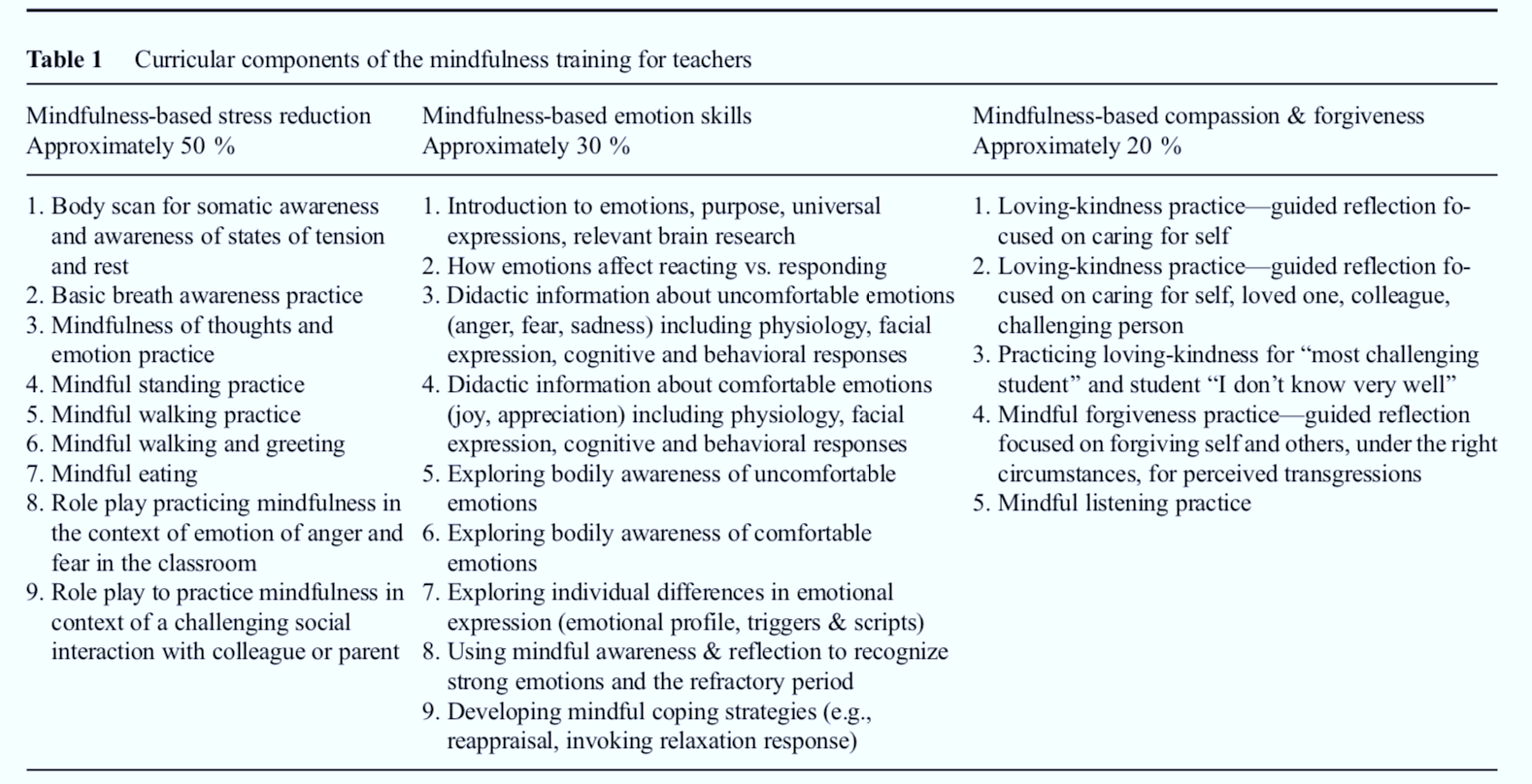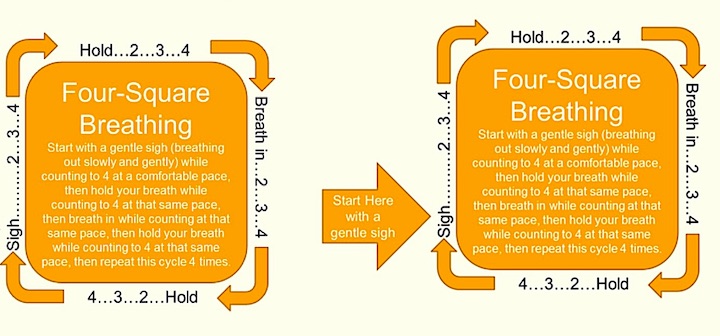Techniques Teachers Use to Reduce Stress
A MiddleWeb Blog
This post was originally written during the Covid pandemic but continues to be a helpful, proactive read during any stressful period in teachers’ lives, including the nation-shaking events of 2025. We’ve updated the text to emphasize its still-timely advice.
 Feeling ‘Stumped’
Feeling ‘Stumped’
I was having one of those Saturdays with far more things to do than I had time for. I was determined to finally get a stubborn tree stump out of my yard, and I needed to do it before my son’s morning soccer game. So my father-in-law and I got to work as soon as the sun came up.
He used a spade shovel to dig up the roots and dirt around the stump while I hacked away at it with an axe. It wasn’t long before I was tired and frustrated.
Each swing seemed to sap a bit more of my strength and enthusiasm. Our progress slowed, and it seemed like we were making less and less headway.
My workmate suggested that we pause, take a break, and use a file to sharpen the axe blade. Through gritted teeth I grumbled that we were in a rush and didn’t have time. He smiled knowingly, shrugged, but didn’t argue.

I came back with the intention of calling it quits, when my father-in-law handed me the axe and suggested we work for about 20 more minutes.
Reluctantly, I went back to hacking away. I was surprised and pleased to see how much quicker the job went. We didn’t get finished before game time, but we sure got close.
On the way to the game, my wife asked if we had been able to get the stump out. I told her no, but mentioned how it seemed like we had gotten more done in the last twenty minutes than we had in the previous two hours.
When she asked us why, my father-in-law said simply, “He just needed a break and I needed to sharpen the axe blade.” It was only then that I realized, chagrined, what he had been up to while I was inside.
The ‘New Normal’
In the pandemic years, many educators found themselves in a similar situation – fatigued, stressed, strapped for time, and floundering to find success in the fog of COVID-era teaching. It was both taxing and disheartening for each of us to struggle so hard and feel as though we are accomplishing so little.
According to studies from the Yale Center for Emotional Intelligence and National Institutes of Public Health, increased angst, stress, and negative emotions were widespread among educators – the result of heavy workloads, time pressures, and a long list of new challenges facing teachers during the pandemic.
For many educators, aspects of that emotionally draining, chaotic, turbulent, and rapidly changing work environment have lingered. Add in growing political strife and new policies aimed at “fixing” the learning loss from the Covid years, and we seem to have arrived at a new normal.
Since the stressors of post-COVID teaching are likely to be around for the foreseeable future, it behooves each of us to pause, refresh and sharpen our axe by taking some time to explore strategies for reducing stress and angst and bolstering our capacity to cope.
Research-Based Teacher Techniques for Staying Balanced
When we get busy and overwhelmed, it’s far too easy to let things get out of balance. For example, a typical response when we don’t feel successful is to assume that we need to work harder and put in longer hours.
While hard work is important, it can be fruitless if it comes at a cost to other, worthwhile activities that keep us thinking clearly.
► If ever there were a time to carve out a half hour or so to exercise, it would be now. For decades, a vast body of research in medicine, psychiatry, and other fields has underscored the importance of 20-30 minutes of cardiovascular activity. Taking a walk, going on a jog, or loading up a quick HIIT workout on YouTube are by far some of the most effective ways to alleviate tension and to improve mood, clarity of thinking, and sleep (Stubbs et al., 2017; Wegner, et al., 2014).
► Basic mindfulness techniques designed for teachers are another powerful way for educators to reduce emotional exhaustion, burnout, and stress (Maricuţoiu et al. 2016). According to researcher Cynthia Taylor and her colleagues, these include trying out different approaches for stress reduction, emotion regulation, and interactions with others (Taylor et al., 2016). Simply summarized, teachers need to sample some strategies in each category to find a few that feel comfortable and work well for them.

(Click to enlarge) Taylor, C., Harrison, J., Haimovitz, K., Oberle, E., Thomson, K., Schonert-Reichl, K., & Roeser, R. W. (2016). Examining ways that a mindfulness-based intervention reduces stress in public school teachers.
► Taking time to build and maintain a strong social support system at work is equally important. For teachers, this means forging connections with others who help us feel supported and encouraged in our efforts (Kinman, Wray, & Strange, 2011). Educators can start by doing a quick assessment of their social support system using the following questions:
- How easy is it to get practical help from my colleagues when I need it?
- How many people am I close enough to that I can count on them if I have great personal problems?
- How much interest and concern do the people around me show in what I do?
This self-inventory allows us to identify where we feel we can lean on our colleagues and those around us, as well as what connections we still need to make.
Stress Reducers from Folks in the Field
While writing this post, I reached out to my colleagues and online teacher network to see what suggestions they had and what practices they’re following. Below are some of my favorites:
► Making a list of things that need to be done, then prioritizing them and crossing them off to see that progress is being made
► Taking a 20-minute break at home to have a few bites of junk food and watch a bit of your favorite show on Netflix, Hulu, Disney+, etc.
► Choosing something from an angst-reducing activity menu of things to do during times of stress and uncertainty

► A number of educators and psychologists suggested exercises in grounding. Grounding helps teachers anchor their awareness back to the challenges of the present moment instead of being overwhelmed with everything else that needs to be done.
Examples: When feeling distressed, simply focus on the 5 senses. What are 5 things you can see around you? 4 things you can touch? 3 sounds you can hear? 2 smells? 1 taste? Some video clips that help illustrate the technique include clear the mechanism from For Love of the Game and take out the trash from Peaceful Warrior.
► Do you remember those carefree ‘foot-loose’ moments as a kid when we used to turn up our favorite tunes and dance like crazy? I was thrilled by the number of grownups I talked to who suggested closing the door and having a quick dance party from time to time.
All it takes is a private place, a great song, and a willingness to dance like you don’t care who sees…without letting anyone see, of course. I tried it and had a blast. My favorite dance grooves, by the way, are Billy Idol’s Dancin’ With Myself, Soy Yo by Bomba Estéreo and Pharrell Williams’ Happy.
► I found a self-care exercise called “trace your hand” really interesting…and effective. Teachers start by tracing their hand on a piece of paper. Then, in each finger, they write down something they like to do. This could be a hobby, interest, talent, or anything you deem satisfying and fun.
The purpose of the activity is to remind us that when we are engaging in the pursuits we find meaningful, we tend to feel better. But when these interests become blocked or compromised in some way, perhaps due to fear, worry, doubt, time demands, insecurities, or a perceived sense of guilt for doing anything but schoolwork, then one by one these fingers bend until you have a closed fist. And what emotions do we associate with a fist? – anger, stress, tension, fear, doubt, anxiety. The message? Don’t close yourself off from what you love.
► Several teachers, particularly those newer to the profession, commented repeatedly on the need for each of us to regularly carve out time to create something or learn something new. Many insisted that it needs to be a “choice activity,” or something we really want to do or learn (like play the guitar, paint a picture, bake something new) rather than something we feel like we have to do.
Helpful Free Apps and Websites
The development of mobile health and de-stressing apps has mushroomed in recent years, resulting in a variety of free tools to help people alleviate situations where we feel emotionally hijacked. These apps (and websites) now make it easy to try out simple psychological techniques wherever and whenever you feel like it.
If you don’t know where to start, consider the following tools recommended by psychologists and teachers alike.
- Antistress – simple games to help distract and calm
- Guided Meditation – guided meditations and tools to manage anxiety, worry, panic, and phobias
- Sand Draw – write your stressors in sand and watch the tide wash them away
- Headspace – meditations, stress-relieving exercises, sleep resources
- Nature Sounds – choose an app from the many Apple and Android choices
Take Time to Sharpen the Blade
Much like removing my tree stump, teaching takes an incredible amount of hard work. We are all having moments when our efforts are blocked or compromised in some way due to time demands, worry, doubt, and a perceived sense of guilt for doing anything but schoolwork.
Each of us, however, must also be willing to recognize when – despite our best efforts – our progress eventually slows and stalls. In these moments it’s essential that we heed the advice of my father-in-law: Pause, take a break, and sharpen the blade so that your hard work continues to pay off.




































Great post! thank you so much
This was just what I needed to read today, very uplifting!
I just got the Nature Melody app and absolutely LOVE it! Thank you for passing this along. I find that during lesson planning and paper correcting time I need to relax and music is too distracting. This is perfect. I’m going to share it with my colleagues.